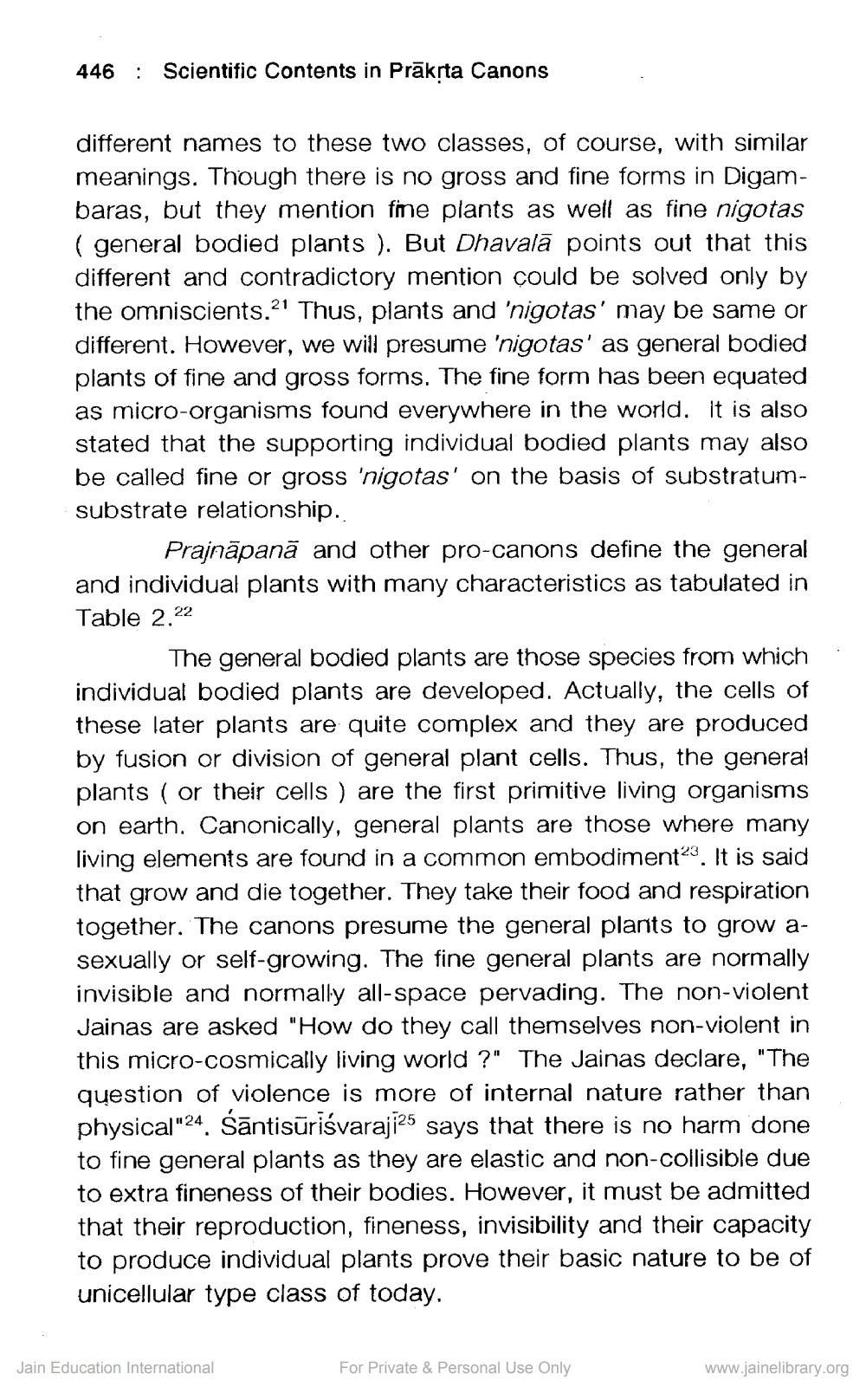________________
446
: Scientific Contents in Prākrta Canons
different names to these two classes, of course, with similar meanings. Though there is no gross and fine forms in Digambaras, but they mention fme plants as well as fine nigotas ( general bodied plants ). But Dhavalā points out that this different and contradictory mention could be solved only by the omniscients.21 Thus, plants and 'nigotas' may be same or different. However, we will presume 'nigotas' as general bodied plants of fine and gross forms. The fine form has been equated as micro-organisms found everywhere in the world, it is also stated that the supporting individual bodied plants may also be called fine or gross 'nigotas' on the basis of substratumsubstrate relationship.
Prajnāpanā and other pro-canons define the general and individual plants with many characteristics as tabulated in Table 2.22
The general bodied plants are those species from which individual bodied plants are developed. Actually, the cells of these later plants are quite complex and they are produced by fusion or division of general plant cells. Thus, the general plants ( or their cells) are the first primitive living organisms on earth. Canonically, general plants are those where many living elements are found in a common embodiment23. It is said that grow and die together. They take their food and respiration together. The canons presume the general plants to grow asexually or self-growing. The fine general plants are normally invisible and normally all-space pervading. The non-violent Jainas are asked "How do they call themselves non-violent in this micro-cosmically living world ?" The Jainas declare, "The question of violence is more of internal nature rather than physical"24. Sāntisūriśvaraji25 says that there is no harm done to fine general plants as they are elastic and non-collisible due to extra fineness of their bodies. However, it must be admitted that their reproduction, fineness, invisibility and their capacity to produce individual plants prove their basic nature to be of unicellular type class of today.
Jain Education International
For Private & Personal Use Only
www.jainelibrary.org




